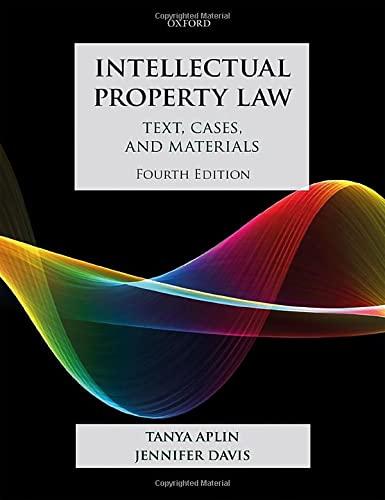Question
Robyn Andrews was a registered nurse employed in the oncology (cancer) unit of University Hospital. Andrews is now 35 years old and was hired by
Robyn Andrews was a registered nurse employed in the oncology (cancer) unit of University Hospital. Andrews is now 35 years old and was hired by University General on June 1, 2009. The hospital has a three-point performance rating system: (1) does not meet expectations; (2) meets expectations; and (3) exceeds expectations. Over the years Andrews's performance ratings were "meets expectations" for most years and "exceeds expectations" for 2016 and 2017.
In her role as a cancer nurse, Andrews was responsible for monitoring patient care, administering cancer drugs (e.g., chemotherapy, opioids), monitoring patient regimes, and counselling patients and their families concerning care options. Accordingly, nurses on this unit were required to maintain certification as "cancer specialists." Andrews received this certification in 2002 and had maintained it ever since. Andrews was verbally counselled and received two written warnings for absenteeism on February 14, 2018, July 25, 2018, and October 4, 2018, respectively. A union representative was present for all warnings. She was terminated on November 7, 2018, following a three-day leave of absence without permission. The letter of discharge states that she was terminated for failing to call in sick as well as for excessive absenteeism (19 percent as against a hospital average of 7 percent). A union representative was present during each of the meetings where warnings were presented to Andrews. Also, on October 4, 2018, Ms. Gomez (her manager) reminded Andrews about the hospital's confidential Employee Assistance Program (EAP). Gomez advised Andrews that she could call the EAP about anything, including drug and alcohol addiction or the recent death of her daughter, that might be affecting her attendance.
Before her discharge, Andrews sought treatment for a drug (a painkiller known as oxycodone) and alcohol addiction. She has been in and out of counselling since October 15, 2018. Between the initial treatment in October 2018 and the time of the arbitration hearing (July 15, 2019), she had three major relapses in which she stopped attending her counselling sessions (dates January 3, 2019, February 14, 2019, and March 17, 2019). She has been drug- and alcohol-free since April 11, 2019. At the time of dismissal, management was unaware that she was being treated for her addiction.
Andrews's addiction counsellor, Dr. Asan, believes that she has an 80 percent chance of remaining chemical-free over the next few years. In Dr. Asan's opinion, it was the unexpected death of Andrews's eight-year-old daughter, who in March 2017 died in the ER of the hospital where she worked, that caused the subsequent addiction. Specifically, Andrews lost control of her car when it hit black ice. An accident followed where she was injured and her daughter subsequently died. Andrews was prescribed oxycodone as a painkiller for her accident-related injuries. There is no evidence that Andrews ever stole oxycodone from the hospital; however, that medication is readily available on the cancer unit where she works. Now that her patient has recovered from this tragic event shock, Dr. Asan believes that Andrews can maintain an acceptable attendance and performance record as a cancer nurse in the future.
Regarding other employees, Ms. Gomez states that only one other cancer nurse, out of a staff of 25, had an absenteeism rate greater than 10 percent (15 percent). That nurse was never given a warning of any kind.
Key Dates
June 1, 2009: Andrews hired
February 14, 2018: Verbal counselling
July 25, 2018: Written warning
October 4, 2018: Second written warning
October 15, 2018: Andrews's initial treatment
November 7, 2018: Termination
July 15, 2019: Arbitration
a) Provide a summary/overview of the case and determine who are the parties, what side each party takes, and how do they plan to it.
b) What are the issues present (apply the principle of just cause)
Step by Step Solution
There are 3 Steps involved in it
Step: 1

Get Instant Access to Expert-Tailored Solutions
See step-by-step solutions with expert insights and AI powered tools for academic success
Step: 2

Step: 3

Ace Your Homework with AI
Get the answers you need in no time with our AI-driven, step-by-step assistance
Get Started


